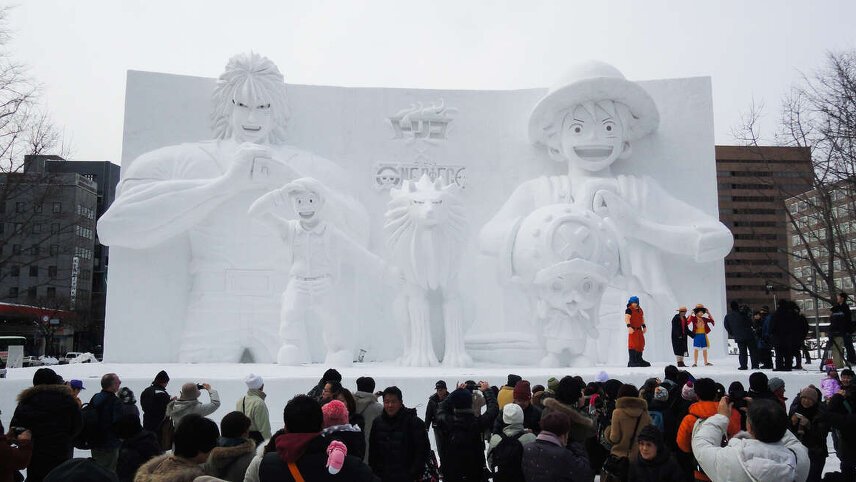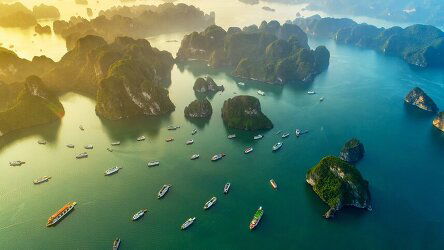Overview
Itinerary
Arrive in Tokyo, the ultra-modern capital of Japan.
For those arriving on time our Leader plans to meet you in the hotel reception at 6.30pm for the welcome meeting and for those that wish, there is the chance to go out for dinner. If some of the group are arriving on later flights then the main introductory briefing will be conducted on the morning of day 2 with everybody present. There are no activities planned today, so you are free to arrive in Tokyo at any time. Should you miss the welcome meeting, your Leader will inform you of any essential information as soon as you catch up.
If you would like to receive a complimentary airport transfer today, you'll need to arrive into Haneda Airport (HND) or Narita Airport (NRT). The city centre is around an hour away from Haneda Airport and an hour and a half from Narita. You will be met in the Arrivals Hall, and transferred to the start hotel by public shuttle bus or private vehicle. The shuttle bus may stop at other hotels, before dropping you at the joining hotel. Stay: The Kanzashi Tokyo Asakusa Hotel (Comfortable) (D)
It is said that over one quarter of Japanese live within a 50 km radius of the centre of Tokyo. The result is a bustling and exciting city, an economic powerhouse of Asia. Our first introduction to this unique culture is when we take a walking tour of the city highlights, using public transport to travel between neighbourhoods. Starting in Asakusa district we discover Senso-ji Temple which deserves to be high on any explorer's list. The oldest temple in the city, it is entered through the imposing Thunder Gate, flanked on either side by massive fierce statues of the gods of wind and rain.
We then board a boat for a short journey along the Sumida-gawa river to the traditionally styled Hamarikyu gardens. The gardens are located in central Toyko and feature several seawater ponds which change levels as the tides rise and fall. This journey offers a totally different perspective of Tokyo, as we sail past high rise apartments, secluded gardens and busy warehouses.
Next we visit Meiji Jingu - an important Shinto shrine dedicated to the deified spirits of the first Emperor and Empress of modern Japan at the end of Japan's feudal era. Its forested grounds offer a peaceful haven in this densely built-up city. Our final stop is Shibuya, known for one of the busiest crossings in the world Shibuya is a hub of up and coming fashion, technology and design in Tokyo with a variety of shops, museum and galleries to explore. We have included entrance to the Shibuya Sky Building which you can explore at leisure. The rest of the afternoon is left free and it is easy to return to Asakusa by metro or continue to the skyscraper district of Shinjuku. Stay: The Kanzashi Tokyo Asakusa Hotel (Comfortable) (B)
This morning we leave the capital and after a transfer to Haneda Airport we take a flight to Abashiri, located on the Okhotsk Coast of the island of Hokkaido. The Ainu are a people indigenous to the lands of northern Japan, with a cultural background that differs from the prevailing Yamato Japanese. After landing in Abashiri we plan to visit the Museum of Northern Peoples to learn more about culture and traditional everyday life of the Ainu and other people that inhabit the northern, subarctic regions of the world. We drive from here the short distance to our hotel for the night.
We include the luggage forwarding service today to ship our main bags to Sapporo which will arrive on day 5, so you will need to pack your day bag for two nights. Please refer to the Trip Information; Budgeting and packing; Luggage on tour section for more information. Stay: Nonky Land Higashimokoto (Comfortable) (B/D)
Abashiri is Japan's northernmost major city located at 44 degrees north latitude. From mid-January to late March the waters here are covered in drift ice and we will be taking a short cruise through the Sea of Okhotsk to get to the main drift ice areas. With luck, a variety of wild animals can be seen including seals and sea eagles resting on the ice. From the ship you can also sometimes spot fox and deer on the coast. The boat ride takes about one hour in total depending on ice conditions. We catch a local bus to the train station where we spend the afternoon travelling by train to Sapporo, a scenic route with views across the snow covered landscape, with one change of trains along the way and arriving in the early evening. Stay: Granbell Hotel Susukino (Comfortable) (B/D)
We spend the full day exploring the annual Snow and Ice festival. The festival first began in 1950 but gained worldwide recognition in 1972 when Sapporo hosted the winter Olympic Games. We will see all of the main venues that have snow statues and ice sculptures including Odori Park, Tsudome dome and the main street in Susukino, Sapporo's entertainment quarter. We will also take time to stop at one of the many ice bars that pop up during the festival. In the evening there is an option to visit the Sapporo Brewery for a tour. Stay: Granbell Hotel Susukino (Comfortable) (B)
This morning we have some free time to further enjoy Sapporo and its surroundings. A great option is to take a bus to the Hill of the Buddha, a striking shrine which features a 13.5 metre high Buddha statue surrounded by an artificial hill covered with Lavender plants. In the afternoon we take the train to Otaru, a small town set along the Otaru Canal. The town is best known for the Snow Light Path festival when the snow-covered streets are decorated with small snow statues adorned with lights, particularly alongside the canal. We arrive slightly too early for the festival in 2024 but a walk around the town is delightful at any time. The town is also famous for fish and seafood and local dish you may like to try is kaisendon - seafood rice bowl. For those interested we can visit one of Otaru's famous beer halls, returning to Sapporo by train in the late evening. Stay: Granbell Hotel Susukino (Comfortable) (B)
Leaving Sapporo we take the train (4 hours) to Hakodate, located on the south-west corner of Hokkaido Island. Hakodate was one of the first ports to open to foreign trade in 1854 and as such has a distinct blend of Japanese and Western architecture. This afternoon we wander through Motomachi district, a neighbourhood favoured by the new foreign residents located at the base of Mount Hakodate, which gives an insight in to how the traders lived and how the cultures merged. In the evening we take a trip to Mount Hakodate for spectacular views down across the city.
We include the luggage forwarding service today to ship our main bags to Kyoto which will arrive on day 9, so you will need to pack your day bag for two nights. Please refer to the Trip Information; Budgeting and packing; Luggage on tour section for more information. Stay: Hotel Resol Hakodate (Comfortable) (B/D)
Today is a day of travel as we make our way across Japan by train to Kyoto, the old Imperial capital. We will either depart at around 09.00 or 06.00 and the journey takes around 8 to 9 hours with a change of trains in Tokyo. It is a great opportunity to relax and take in the scenery and the high tech efficiency of Japan's wonderful rail system, complete with an undersea rail tunnel between Hokkaido and the main island. If time allows, you may choose to get up early to see traders in Hakodate's morning market selling fresh seafood that the island is famous for, such as crabs (kani) and sea urchins (uni).
Kyoto is the cradle of all things uniquely Japanese and the only large city to escape bombing in WWII. It was the Imperial capital for more than 1000 years and was at the heart of the events that shaped Japan's destiny. Signs of the past are visible throughout the city in its grand temples and palaces and also the many traditional shops selling wares that have been produced for centuries. Stay: Via Inn Prime Kyotoeki Hachijoguchi (Comfortable) (B/D)
Kyoto is regarded as the place to see everything you expect to experience in Japan, with more than 2000 temples and shrines, many set in manicured landscaped gardens. But it is also a modern city. We spend a full day, making use of public transport, to explore the city including a visit to the temple of the Golden Pavillion and Ryonji temple with its beautiful zen gardens. To take a break from the sites, and the cold outdoors, we have planned a private tea ceremony today to learn all about the culture around this practice. Stay: Via Inn Prime Kyotoeki Hachijoguchi (Comfortable) (B)
Today is a free day to explore Kyoto at your leisure. You may wish to take a trip to nearby Nara, home to the Todaiji Temple, Big Buddha and the Kasuga Shrine. Your Tour Leader will be on hand to give you tips on where to visit and make the best of your time in this beautiful city. Stay: Via Inn Prime Kyotoeki Hachijoguchi (Comfortable) (B)
The trip ends after breakfast at our hotel in Kyoto.
There are no activities planned today, so you are free to depart from Kyoto at any time. If your flight is departing later in the day luggage storage facilities are available at our hotel, while you head out for some last minute shopping or sightseeing. If you would like to receive a complimentary airport transfer today, you need to depart from Kansai International Airport (KIX), which is around one and a half to two hours away, or Osaka International Airport (ITM) which takes around an hour. (B)
Trip Inclusions
- Discover Japan in the heart of winter and visit the Sapporo Snow Festival
- Visit Japan's northernmost island of Hokkaido
- Enjoy the highlights of modern Tokyo and iconic Kyoto in low season without the crowds
- Full on paced trips are for travellers who like their holidays packed with activities and experiences, moving on quickly from place to place with lots of early starts and long, busy days. Some may find them tiring, but others get a buzz from packing their precious holiday-time as chock-a - block full of new experiences as possible.
- Accommodation, itinerary and inclusions subject to change.
- Price is for land, cruise and internal flights as specified. Flights not specified are not included
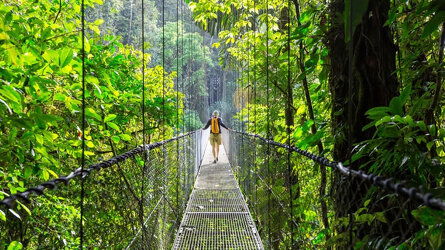
Launching in 1981, Explore offer trips from over 130 countries - from classic small group tours. Read more
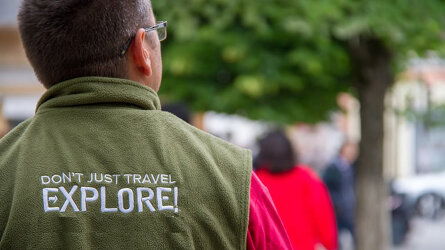
Explore's leaders are more than just your typical guide. They're your local expert are are passionate about sharing their expertise with you. Read more
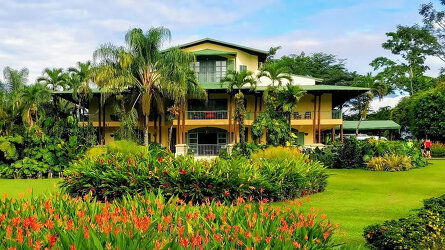
The places Explore stay are every bit as important as the sights they visit and the things you do. Read more
Brochure
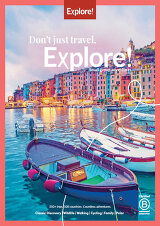
Explore Small Group Adventures (2025-26)
Availability
 USD
USD
A definite departure means minimum numbers have been reached for this departure to operate. Your Global Journeys Travel Advisor will check the availability of your departure date when you enquire. Additional savings may apply. We guarantee the lowest price in USA. T&C’s apply.
Tour & cruises prices are per person. Prices shown have savings applied, are subject to availability and may be withdrawn at any time without notice. Pricing and trip details are correct at this point in time, however are subject to confirmation at the time of booking and are subject to change by Explore. For cruise itineraries, cabin images are sourced from Explore. These should be treated as indicative only. Cabin inclusions, upholsteries and room layout may differ to the image(s) shown depending on the ship selected and your sailing dates.
